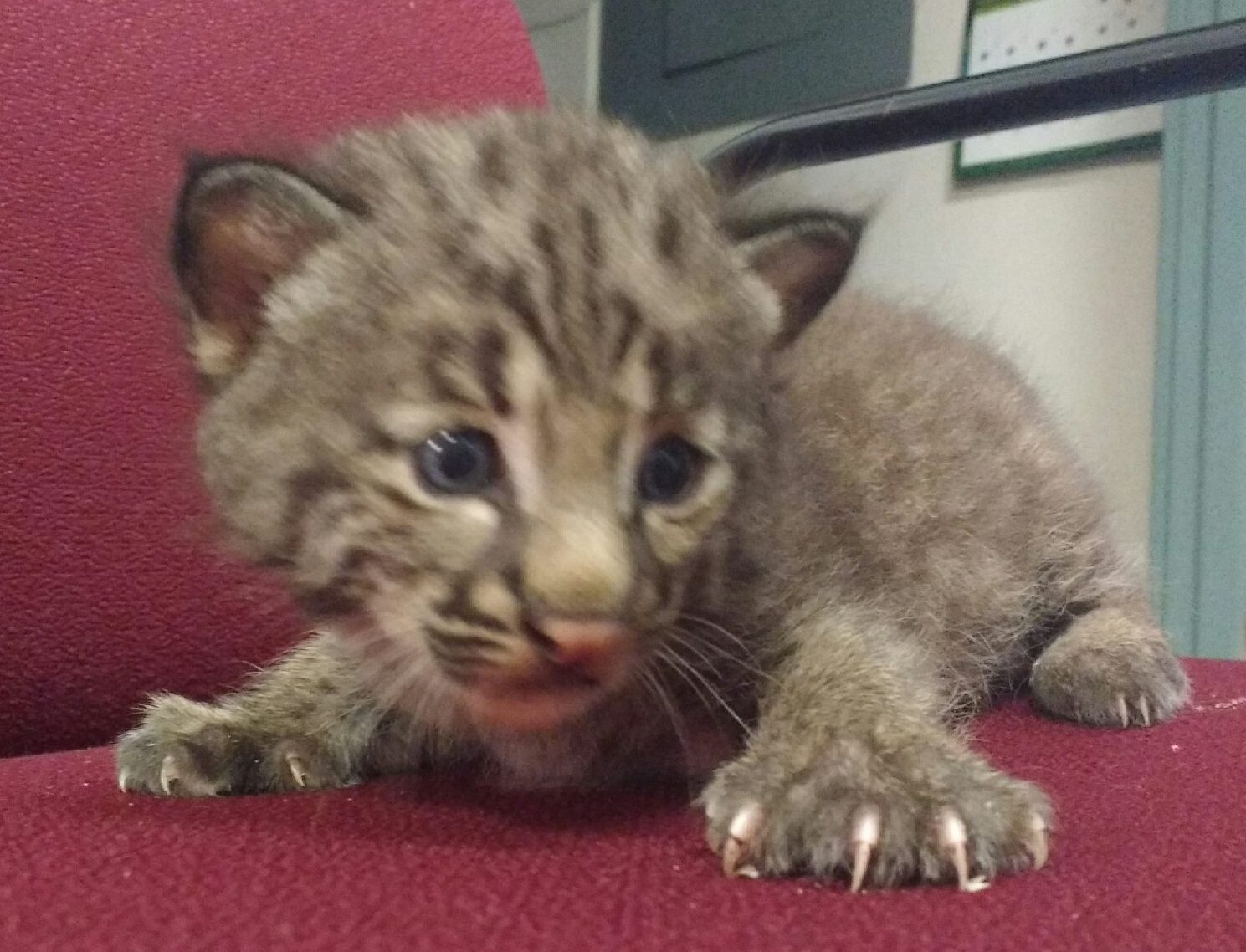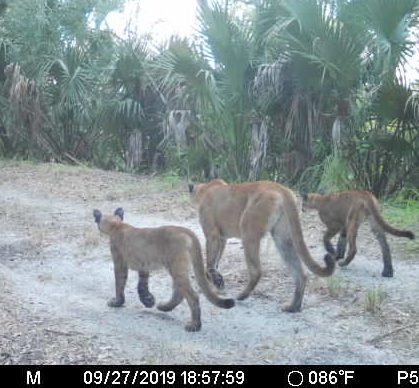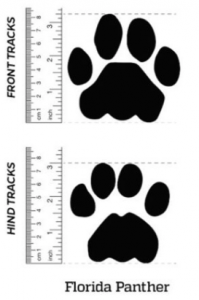
Even if you’re not a cat person, Florida’s two wild cats, the Florida panther and the bobcat, are sure to excite. While sometimes mistaken for one another, both the common bobcat and the endangered Florida panther make for thrilling wildlife encounters.
Read on to get a brief lesson on identifying Florida’s feline faces. Or, head over to YouTube to watch our Wild Sarasota webinar: Florida’s Wild Cats for an in-depth look into the natural history, population status, threats, and more of our two native wild cats.
Identification: Bobcats vs. Panthers

While spying an endangered Florida panther in your backyard is far less likely than the semi-urbanized bobcat, it’s still important to be able to tell them apart. The main differences and identifying points are:
Size
Weighing in at 130lbs, Florida panthers are Florida’s largest cat and are between 3 – 5 times bigger than bobcats. Panthers stand about thigh-high on adult humans while a large bobcat would just reach your knee caps, so size can be a great indicator.
Tails

Another giveaway for differentiating between bobcats and panthers is tail shape and length. A panther’s tail is nearly as long as its body and extends down almost to the ground. By contrast, bobcats have stubby, “bobbed”, tails that often turn upwards exposing a white underside not found on panther tails. The length of bobcat tails vary, but will never be as long as the length of its body.
Ears
If you’re lucky enough to have gotten a close look, or even at some distance, panther and bobcat ears are a great point of difference. The backs of panther ears are black while bobcats have distinct white patches on the back of their ears.
Color and Pattern
Both bobcats and panthers are born with spots. But panthers lose their spots entirely as adults, exhibiting an all over tawny coloration. Bobcats, on the other hand, have spotted, reddish-brown coats with undersides from youth to adulthood. Bobcats may also be distinguished by their prominent white “beard”.
Could it be a Coyote?

With the many brownish-tan four-legged friends that make Florida their home, coyotes can also be misidentified as either one of Florida’s wild cats. In contrast with our feline friends, coyotes take on a much scrawnier appearance with longer legs and are midway between the height of a panther and a bobcat. Coyote ears are pointed compared to the rounded shape of panthers and bobcats, and are a solid tannish color. If they happen to leave a track, that can be an easy way to distinguish between canines and felines.


Wild cat spotting, What’s next?
While there is no reason to report a bobcat or panther sighting should the animal look normal, it’s always important to report concerning or unusual behavior.
In the event that you see a sick, injured, or dead cat, please notify FWC at 1-888-404-3922.
Can’t contain your curiosity?
Read all our Wild Sarasota blogs HERE
Watch our Wild Sarasota Webinar: Wild Cats of Florida webinar for more about these fascinating felines and the threats they face.
 1
1
